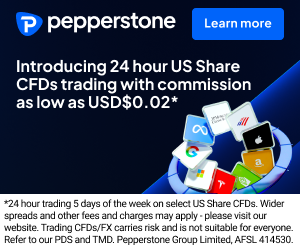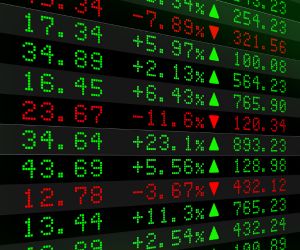WHAT IS A MARKET ORDER AND WHY SHOULD BE CAREFUL WHEN USING IT
Understanding the different types of trading orders is essential for anyone venturing into financial markets. One of the most common order types is the market order. This detailed guide will explain a market order, how it works, and why traders should be cautious when using it. You will learn about the risks associated with market orders, such as slippage and price uncertainty, and how to mitigate these risks effectively.

What is a Market Order?
A market order is an order to buy or sell a security immediately at the current market price. This type of order guarantees execution but does not guarantee a specific price. It is generally used when the priority is to complete the transaction quickly rather than securing a particular price.
When you place a market order, you say, "I want to buy or sell this asset right now at the best available price." This can be advantageous in fast-moving markets where prices can change quickly. However, this immediacy comes with certain challenges and risks.
For example, if you place a market order to buy a stock, the order will be filled at the best available price at that moment, even if it is higher than anticipated. Conversely, if you are selling, the order will execute at the highest available bid price, which could be lower than expected.
How Do Market Orders Work?
Market orders are easy to place and understand. Here is a step-by-step description of how they work:
Choose an Asset: First, decide which asset you want to buy or sell. It can be a stock, bond, cryptocurrency, or other traded security.
Place the Order: Enter the market order through your trading platform. In most platforms, this involves selecting the asset and the market order type.
Order Transmission: The order is sent to the market and matched with the best available bid or ask.
Execution: The transaction is executed almost instantly. The asset is bought at the lowest ask price or sold at the highest bid price.
While this process is almost instantaneous in most cases, the exact price at which your order is executed can vary, especially in highly volatile markets. This leads to a phenomenon known as "slippage."
Risks Associated with Market Orders
Market orders can be risky, particularly in volatile markets or with less liquid assets.
Slippage: One of the most significant risks is slippage, which occurs when the price at which your order is executed differs from the last traded price you expected. Slippage can be especially problematic when placing large orders in illiquid markets.
Price Uncertainty: Since market orders prioritize execution speed over price, they can result in unfavourable trades. This is not a major issue in highly liquid markets with minor price changes, but it can be a concern in less liquid or more volatile markets.
Lack of Control: With market orders, there is no way to control the price at which your trade is executed. If market conditions change rapidly, you could buy at a much higher price or sell at a much lower price than you intended.
For example, imagine trying to buy a stock experiencing a rapid price increase. You might place a market order during a price spike and pay significantly more than the price shown when you initiated the order.
When to Use Market Orders
Given the risks, knowing when it is appropriate to use market orders is essential. Here are some situations where market orders can be advantageous:
Highly Liquid Markets: Market orders are usually safe to use in markets with high liquidity, such as large-cap stocks or major currency pairs. In these situations, the price differences between placing and executing the order tend to be minimal.
Urgent Trades: Market orders can be useful if you need to enter or exit a position immediately and are willing to accept some price uncertainty. For example, during highly volatile market conditions where prices change rapidly, a market order might be the best way to ensure you can trade quickly.
Small Orders: If you are trading small amounts of an asset, the impact of slippage and price uncertainty can be relatively minor. Market orders can be a convenient option in such cases.
However, even in these situations, weighing the potential risks against the benefits is crucial before deciding to use a market order.
Risks Associated with Market Orders
Market orders can be risky, particularly in volatile markets or with less liquid assets.
Slippage: One of the most significant risks is slippage, which occurs when the price at which your order is executed differs from the last traded price you expected. Slippage can be especially problematic when placing large orders in illiquid markets.
Price Uncertainty: Since market orders prioritize execution speed over price, they can result in unfavourable trades. This is not a major issue in highly liquid markets with minor price changes, but it can be a concern in less liquid or more volatile markets.
Lack of Control: With market orders, there is no way to control the price at which your trade is executed. If market conditions change rapidly, you could buy at a much higher price or sell at a much lower price than you intended.
For example, imagine trying to buy a stock experiencing a rapid price increase. You might place a market order during a price spike and pay significantly more than the price shown when you initiated the order.
When to Use Market Orders
Given the risks, knowing when it is appropriate to use market orders is essential. Here are some situations where market orders can be advantageous:
Highly Liquid Markets: Market orders are usually safe to use in markets with high liquidity, such as large-cap stocks or major currency pairs. In these situations, the price differences between placing and executing the order tend to be minimal.
Urgent Trades: Market orders can be useful if you need to enter or exit a position immediately and are willing to accept some price uncertainty. For example, during highly volatile market conditions where prices change rapidly, a market order might be the best way to ensure you can trade quickly.
Small Orders: If you are trading small amounts of an asset, the impact of slippage and price uncertainty can be relatively minor. Market orders can be a convenient option in such cases.
However, even in these situations, weighing the potential risks against the benefits is crucial before deciding to use a market order.








